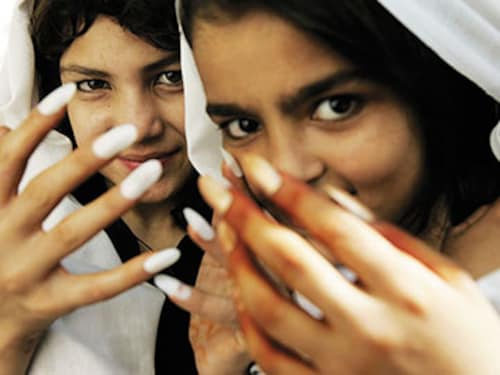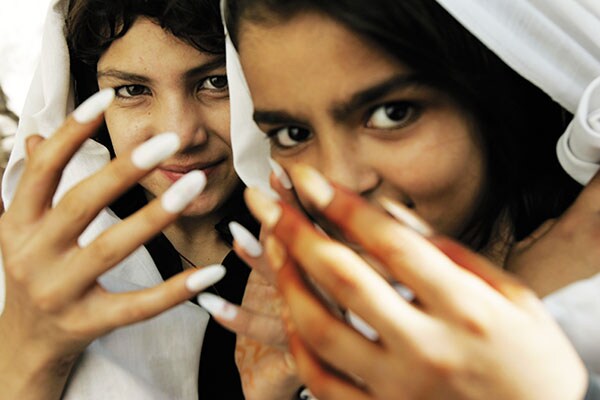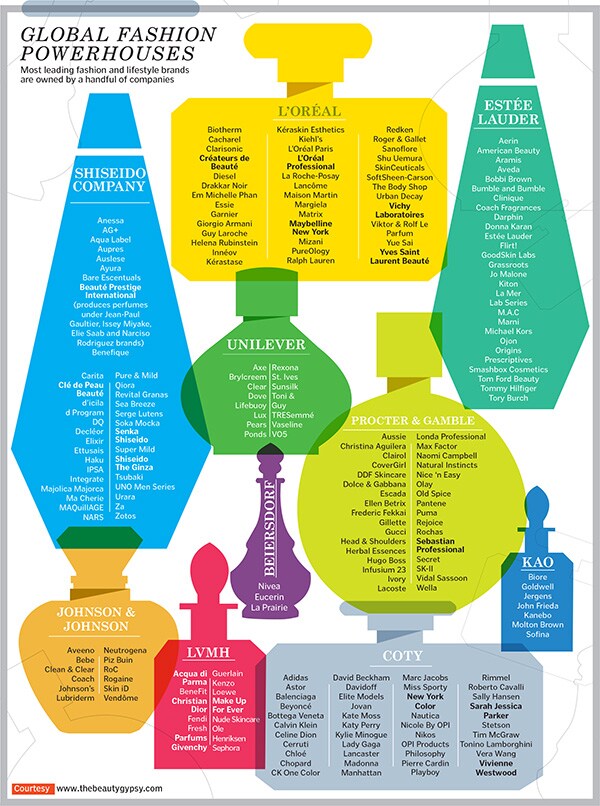Eye Of The Beholder: The Importance of make up
Beauty products, cosmetics, lotions and potions are just a small way in which we choose to assert our individuality


Last week I conducted a random test with my girlfriends. I asked them what they had in their beauty kits. The plethora of brands that emerged was so diverse that even the finest rationalist would be hard-pressed to find any semblance of logic in their choice. From radically differing price points to the oddest, most specific, of products (think pore minimisers and lower eyelash mascara), the schizophrenia was matched only by the attention to detail. For instance, my own beauty bag had two tubes of mascara (clear and noir), three kinds of lipstick (nude, red, brown), a worn-down eye pencil, a tiny bottle of fragrance and a sample-sized blister pack of foundation. I am omitting some of the stranger stuff because that falls in the realm of too much information. But I did wonder why I was prepared for some sort of make-up drought—apart from the fact that I once ended up travelling without my cosmetics pouch and had to spend my entire trip slapping my face to create a semblance of rosy cheeks. Women with less damaging experiences tend to hoard make-up in the strangest of places.
But that is not the point. What I find truly odd is the attachments they form. It could be with a really expensive Guerlain eye pencil or an organic EOS lip balm—we truly buy into the promise of delivery. Every woman I know genuinely believes that the next product will be the one that will cut the frizz from her hair at the height of a ghastly Mumbai monsoon. Well, it should come as no surprise that not only are big beauty houses aware of this phenomenon but they also have all their bases covered. And chances are your favourite brand(s) is owned by one of these major giants. Yes. Even that very specific brand you felt you had discovered during one of your trips out of the country, the one that felt had been created with just you in mind. I mean, comparing Jo Malone and its wonderfully unexpected fragrances to La Mer which was developed by an aerospace physicist is apples and oranges. They are like chalk and cheese, right? Except for one common factor: They are both owned by Estée Lauder. But before you think it’s all same wine in different bottles, there is good news. Corporate entities might own a brand in name but they know that the only reason it works is if its individuality is respected.Consider MAC (Make-up Art Cosmetics). Founded in 1984 in Toronto, Canada by two Franks (Toskan, a photographer and artist, and Angelo, a beauty salon owner), it was born from a desire to create make-up that would hold its own under the glare and heat of studio lights. Made for professionals, it became so popular that it was soon launched in the market. Its USP was simple: Accessibility and range brought to you by the experts. It revolutionised the way regular girls used products. Everyone now had access to pro tools. So when Estée Lauder took over the entire brand in 1998, it made sure it retained the brand’s core values. Till today, make-up prototypes by MAC are put through the rigour of the fashion weeks. I was witness to this during a season of Paris Fashion Week where it worked on the shows of designers such as Alexander McQueen, Ann Demeulemeester and Kenzo. The product they were testing—their amazing gel eyeliner—and its versatility passed with flying colours. It is still flying off the shelves.
Similar discipline is practised at the laboratories of Estée Lauder in New York—where every new innovation is tested and retested, while older products continue to be put under the microscope for improvements. My favourite trivia picked up from the scientists was that their bestselling product, Advanced Night Repair (ANR), is not just for fine lines and the first signs of ageing. It is a great product to carry with you at all times because it can be used to treat cuts and burns and even acute cases of sunburn. Try this at home: Apply a fine layer of ANR Eye Serum or under-eye cream on the back of your hand. Then run water over it—it slides off!
The funny thing is I wasn’t always a convert. In fact, if you are part of the fashion media, you tend to be a huge cynic of the entire PR and marketing machinery. This is why I got very snarky during a lovely presentation by the Lancôme team in Paris, where they were sharing the details of the research they put into their products. We were discussing the fact that the mascara wand gets a disproportionate amount of funding versus the liquid because the trick to even application lies in the tool. I had to, at that moment, pipe up and ask what would happen if the same amount of money was used for medical research? Wouldn’t AIDS or cancer benefit with an extra boost of cash? A mild-mannered, bespectacled scientist in a white lab coat looked at me, smiled and said he thought it was worth it if it allowed women to feel good about themselves. Image: Getty Images
Image: Getty Images
Pashtun girls wearing fake nails in Jalalabad, Afghanistan
And then it struck me: Beauty products, cosmetics, lotions and potions are just a small way in which we choose to assert our individuality. It has little to do with being frivolous or vain.
When women in Afghanistan were forced by the Taliban to give up all their personal freedoms, they created secret school rooms and beauty salons as a mark of their opposition. In her documentary Beneath The Veil, Saira Shah asked the women behind RAWA (Revolutionary Association of the Women of Afghanistan) about why they chose to take huge risks to wear nail polish. One woman replied very eloquently, “You can make a woman wear a veil, but this is our way of showing you haven’t crushed our spirit.”
The writer was editor-in-chief of Elle India for 13 years (till Dec 2012), a role in which she influenced fashion and lifestyle
First Published: Aug 02, 2014, 06:22
Subscribe Now(This story appears in the Feb 05, 2010 issue of Forbes India. To visit our Archives, Click here.)
